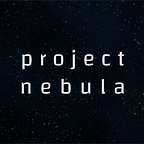Spaceships, Exploration, and Discoveries
The planets are not the only things…
There’s so much more out here than we expected, Captain. And not just Terran workings either. Something purely alien.
Let’s approach.
Exploring the Void
Hex-based exploration (hexploration?) means there are six possible movements from any position that you’re in. As you move through the void, you’ll uncover hidden objects, stars, rogue planets, and so much more. Many solar systems (stars) and wormholes are known from a longer distance, but most objects are waiting for your ship to approach before your scanner will detect them.
The coloration of hexes (pictured above) is not without purpose. Blue hexes show a traversable space that has already been visited and that costs less fuel to travel back into. Red hexes show a traversable space that you’ve not yet visited, exploring this area takes a bit more fuel. Black hexes are completely unscanned void — when you move into range of one, it will turn red.
Once you’ve successfully moved through a hex, the astronomical background will be revealed permanently.
Your Ship is Ready, Captain
And, yes…it’s an NFT.
Initially, spaceships were going to be made available in a later generation — closer to PvP.
Now? They’ll be a part of the Project Nebula launch. We’re designing some awesome vessels for the bravest of explorers.
When Project Nebula launches, players will be limited to one active ship. This will change with further development as well as the addition of more features and functions to ships. Speaking of…
Ship Functions
Ships are how you colonize planets and travel the universe. There will be multiple classes of ships released with varying properties that assist exploration, travel and colonization. In Generation I there will be movement and exploration functionalities to ships, but in later generations there will be other additional properties (pew pew).
Each ship will come with a few different properties that determine how efficiently it moves through new space, discovered space, and how costly it will be to colonize a planet using it:
Exploration: defines how much fuel it costs to uncover new hexes.
Movement: defines how much fuel it takes to travel explored hexes.
Colonization: defines the cost of colonizing a new planet.
Simply enough. There are going to be some awesome looking ships that make your life of pioneering through the void a real treat. The Falcon to your Solo. The Enterprise to your Picard. The…you get the idea.
Discoveries in Space
There’s more than just star systems and planets out there. After discovering this alien tech on Avastus, humanity began to see signs of alien life and other exploration vessels floating around.
There are hoards of alien, faction-based, and human objects hidden throughout the void. Discovering them can bring a wonderful benefit to your research, credit, industry and fuel points. They can even contain some sweet lore, art, or soundtracks inside of their compartments.
There is no current cost for choosing to reap the benefits of these finds, minus the fuel it takes to reach the hex they’re in. Rather than go through what each individual one does, let’s look at their differences:
Permanent Features:
Someone’s been here before, Lieutenant. I expect we won’t be the last to visit either.
These are objects and locations that can be revisited anytime, daily, or weekly — this depends on the object. Stars (solar systems) are always explorable. Wormholes are able to be visited multiple times.
These objects are not removed from the map after being visited by one player.
Temporary Features:
We’ve got to get to that thing before anyone else does! I suspect it won’t be around too long.
These are objects that, once utilized, will disappear from the map. You may come across a derelict freight vessel that needs to be rummaged through, or perhaps your ship’s scanner picked up an exotic asteroid that deserves some looking into.
These objects give small boosts to various stats: research, credit, industry and even exploration capacity. Take advantage of them when you see ‘em.
Rogue Planets and Neutron Stars
In the deepest parts of the void, where light itself could be a currency, there exists hidden stars and worlds waiting for the bravest explorers.
Where do rogue planets come from? Cast from their orbit and into the darkness? Formed without any scientifically known reason? These planets orbit around no star and are treasured by those hoping to colonize the universe. Finding one will be a true treat.
But these Neutron Stars are a mysterious beauty. Nearly undetectable. Once a bright, blistering Supergiant, now a radiation-emitting and cooled off Supernova remnant. Their planets still faithfully orbit.
If you’re the first to find one of these systems…don’t pass it up.
Claim Your Planet — it’s never too early. And join our communities below:
